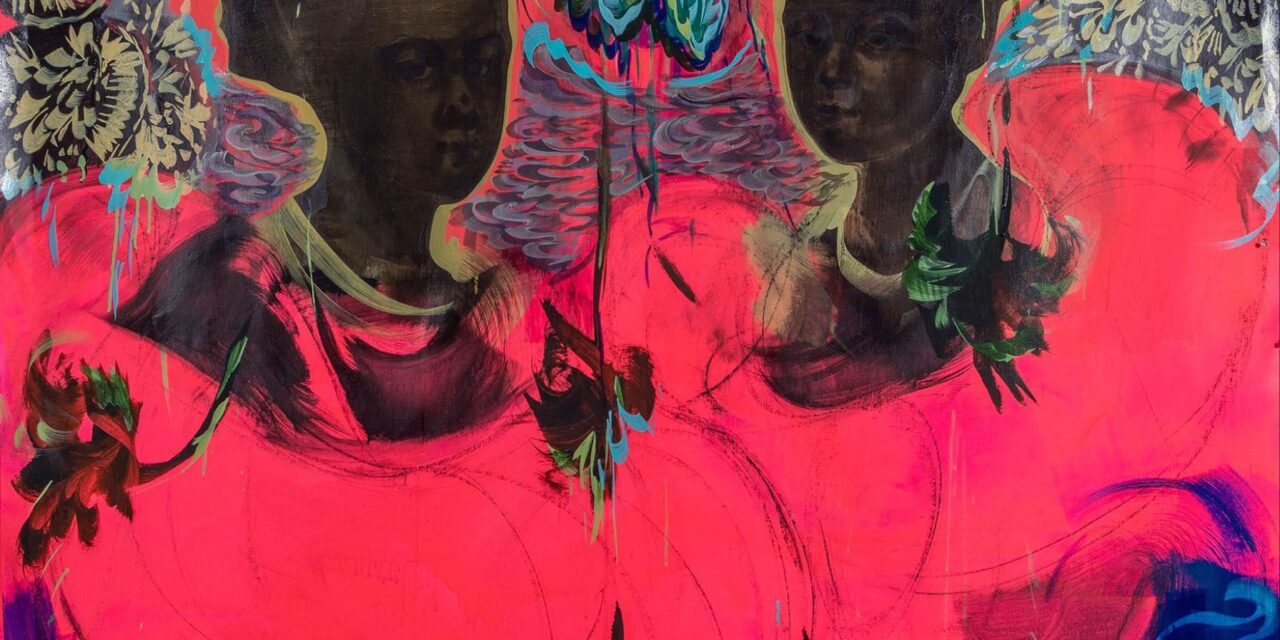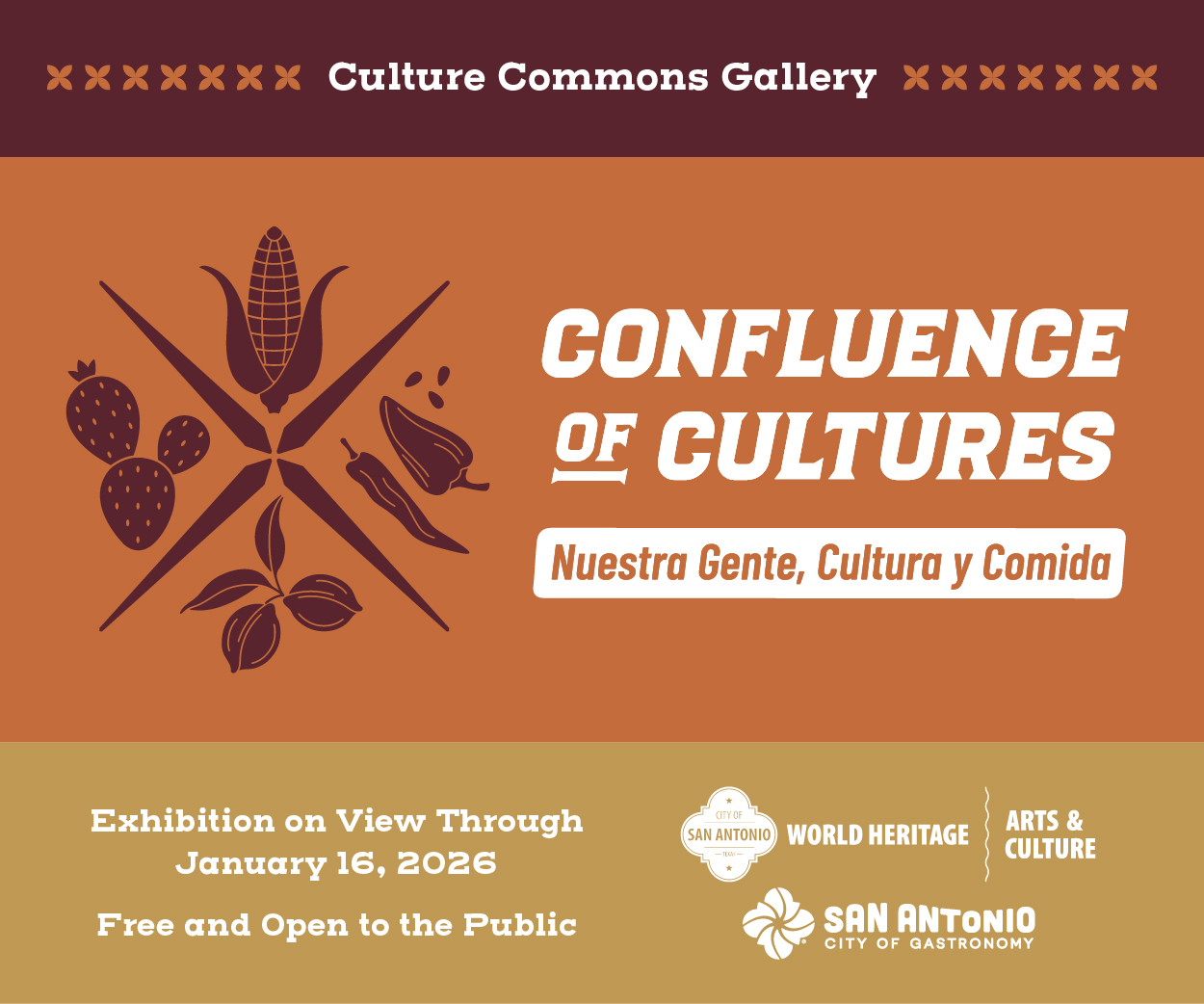By Dr. Ricardo Romo
The popular exhibition “Voces de Luz: Cambiando el Mundo con Arte y Amor” at La Peña Gallery in Austin celebrated International Women’s Day with a vibrant showcase of women artists. Curated by Dolores Garcia, the exhibit reintroduced me to the Dominican artist Scherezade Garcia of UT Austin and introduced me to several other Latina artists from the Texas Capital City whose artwork was new to me. I had met Scherezade Garcia in San Antonio at the closing of the Mujeres exhibit at the Centro Cultural Aztlan.
Garcia’s contribution to Latino art is significant not only because of her beautiful paintings and installations, but also because she is a teacher and art influencer of Caribe [Caribbean] art and history. I received my training in US history and Latin American history from very good universities. What I learned from brief conversations with Garcia regarding colonialism and the Afro-Latino Diaspora surpasses some lectures I heard at UT Austin and UCLA.
Garcia admits to having a fascination with the social human experience of her homeland. “This fascination,” she wrote, “has led me to such themes as the causes and consequences of migration, the mestizo and barroquism as consequences of colonization, the inversion of traditional beliefs of salvation, and the questioning of religious and social uses of the notion of paradise.”
Scherezade Garcia was born in the Dominican Republic and has been instrumental in introducing Texans to Caribe [Caribbean] art and history. Her interest in colonialism is understandable given that her Santo Domingo community was founded in 1496 by Bartholomew Columbus, brother of Chrisopher Columbus, as the capital of the first Spanish colony in the New World. It is the oldest permanent city established by Eurlopeans in the Western Hemisphere.
In the mid 1980s, Garcia came to the US to study at the Parsons School of Design in New York City. She had earned an AAS from Altos de Chavón School of Design in the Dominican Republic. In 2011, she completed a MFA in Sculpture at The City College of New York (CUNY). A co-founder of the Dominican York Proyecto GRÁFICA, she taught as a faculty member at Parsons from 2010-2021. In 2021, she joined the Art Department at UT Austin.
Garcia’s artistic interests include painting, printing, and installations. In her writing and lectures, she expands on her research interests relating to themes of Spanish colonial history and Afro-Atlantic legacies and explains that her art is informed by aspects of her black and European heritage. The Afro-Atlantic legacies are of special interest to her. With the founding of Hispaniola, the initial name of the Dominican Republic, Columbus introduced sugar cane to the Americas which resulted in the establishment of large sugar plantations. The Spaniards enslaved the Taíno natives to mine for gold and then employed them without pay on the new sugar plantations. The poor Taíno natives did not last long, and soon the Spanairds began looking to Africa for new labor to exploit.
The Spanish colonization of the Caribbean islands, including the Dominican Republic, Cuba, and Puerto Rico, rested on slave labor. What makes the Dominican so unique is its history of slave rebellions and resistance. In my Latin American history classes I learned of the great slave rebellion in Haiti in 1805. But after seeing Garcia’s paintings and explanations, I was inspired to learn more. I found that the first slave uprising of the Americas was actually in 1521 on Diego Colón’s sugar plantation near Santo Domingo City. The uprising was led by slaves Maria Olofa and Gonzalo Mandinga from West Africa, both from the Wolof ethnic group. Following the uprising, hundreds of slaves escaped to the mountains and countryside where they formed communities.
In 2024 the Los Angeles County Museum of Art [LACMA] acquired Garcia’s “Harvest of the Sea.” The description of that painting by Ilona Katzew, LACMA Curator and Department Head of Latin American Art Acquisition, zeroed in on Garcia’s theme and focused on Afro-Atlantic legacies. Katzew wrote that García’s painting Liquid Highway, “encapsulates her exploration of themes such as migration, history, memory, and cultural hybridity.” Viewers, added Katzew, will see that her “artwork uses the ocean as a central motif, representing both connection and division, as well as a metaphorical ‘highway’ for diasporic experiences.”
Through Liquid Highway, Series 2 at the Voces de Luz exhibit, García reveals her deep fascination with the Atlantic Ocean which she sees as both a road to histories of slavery and migration, as well as a path to freedom. Garcia understands that survival and resistance are constant in the Dominican experience. Harriett and I met Garcia over dinner in the days before her Austin exhibit closed. She discussed her visual narratives, such as the first large-scale migration from the Caribbean in the early 20th century. The search for work and a better life took these hardy Dominicans to construction sites of the Panama Canal, agricultural fields of Florida, and manufacturing and service jobs of New York City.
Today, US Dominicans live primarily in the Eastern states with New York, New Jersey, Florida, and Massachusetts, in that respective order, having the largest number of Dominican residents. Demographers noted that over the past 25 years–since 2000, the Dominican population in the US has grown by 200 percent. Over 800,000 Dominicans live in New York City and are concentrated in Washington Heights and Brooklyn. As their population grows, Dominican youth are attending college in greater numbers, and artists like Garcia are determined to see that the young people learn and appreciate their culture.
In 2015 Garcia received the prestigious Joan Mitchell Foundation Painters & Sculptors Grant followed by the Colene Brown Art Prize in 2020. An edited monograph on her work, Scherezade García: From This Side of the Atlantic, was published in 2020 by the Art Museum of the Americas.
García has been featured in solo and duo exhibitions at the Art Museum of the Americas, the Clifford Art Gallery at Colgate University, the Miller Theater at Columbia University, Lehman College Art Gallery, Crossroads Gallery at the University of Notre Dame, and the Museo de Arte de Santo Domingo.
She has participated in the Havana Biennial, the International Biennial of Paintings at Haute de Cagnes, the IV Caribbean Biennial, Trienal Poli/Gráfica de San Juan, the Latin American Biennial, the BRIC Biennial, the Venice Autonomous Biennial, and in international fairs. Garcia’s work is included in the permanent collections of the Smithsonian American Art Museum, the Art Museum of the Americas, El Museo del Barrio, The Housatonic Museum of Art, El Museo de Arte Moderno in Santo Domingo, and others. Garcia is represented by Praxis Art Gallery in NYC, an Argentine gallery with its main gallery in Buenos Aires.









